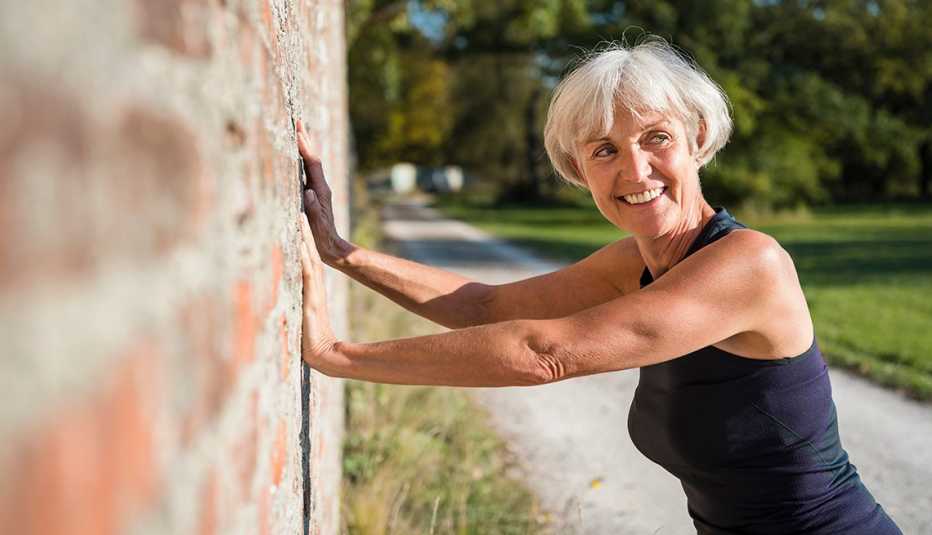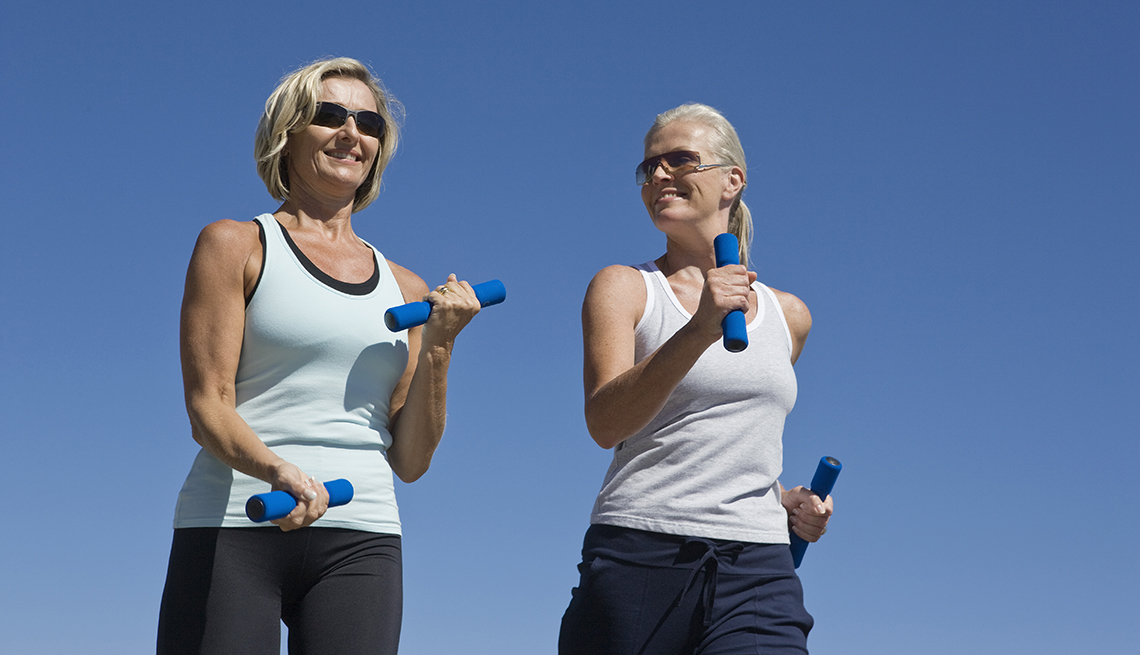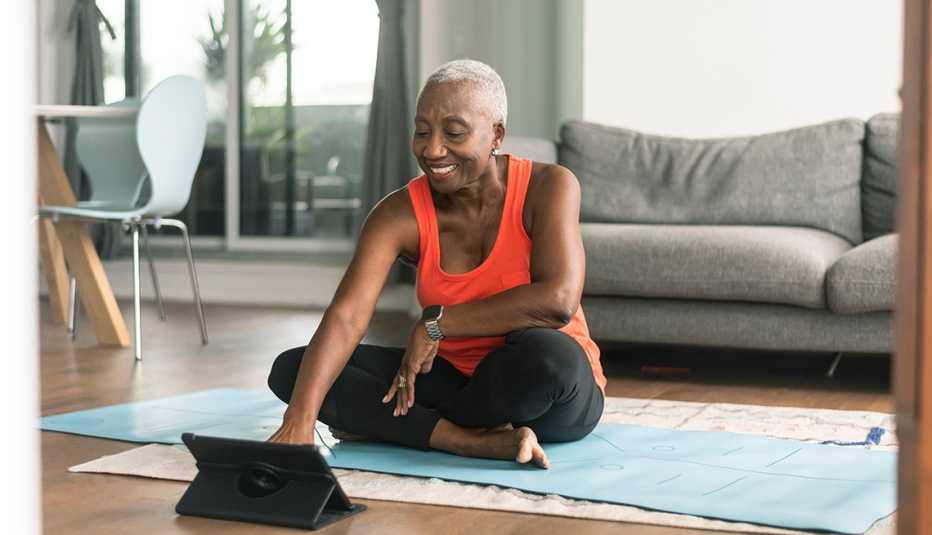Staying Fit
Maybe you’ve been sedentary for months or have held off on exercise because of the pain in your knees. Or maybe you walk most days of the week but want to up your game a little and tone your arms, too. We’ve gathered tips from fitness gurus on how to beef up your fitness regimen, whether you’re starting from ground zero or seeking some targeted intensity.
Three things to try if you’ve been sedentary
Just walk. Keep it simple initially. Go outside, set a timer for three to five minutes, and when the alarm goes off, head back, says Damien Joyner, a certified personal trainer in San Diego and spokesperson for the American Council on Exercise. After a couple of weeks, add a few more minutes. Also, sneak in bits of activity, such as parking at the far end of the lot when you run errands. Experts say these little bits add up and enhance your fitness.


AARP Membership— $12 for your first year when you sign up for Automatic Renewal
Get instant access to members-only products and hundreds of discounts, a free second membership, and a subscription to AARP the Magazine.
Do some gardening. “People underestimate how much exercise this really is,” Joyner observes. A 140-pound woman who gardens for 30 minutes burns off 159 calories. And some research indicates that working the soil not only lowers BMI but also reduces depression and anxiety.
Try a wall-assisted workout. You can do push-ups or squats against the wall or use it for stability while you march in place or kick a leg out to the side. “If you know the wall is there, it gives you security and allows you to brace yourself, so you’re not placing the full load on your upper or lower body,” says Len Glassman, a certified personal trainer in Garwood, New Jersey, who works frequently with older clients.





































































